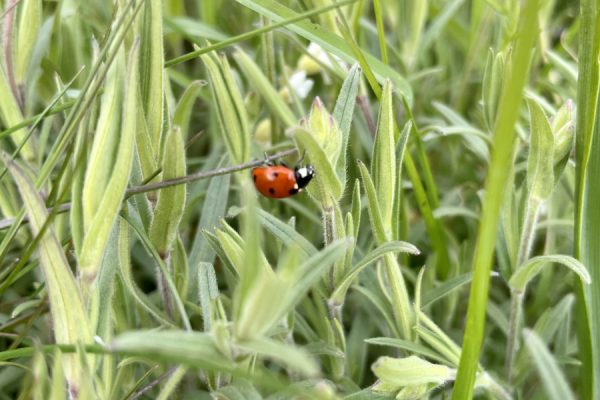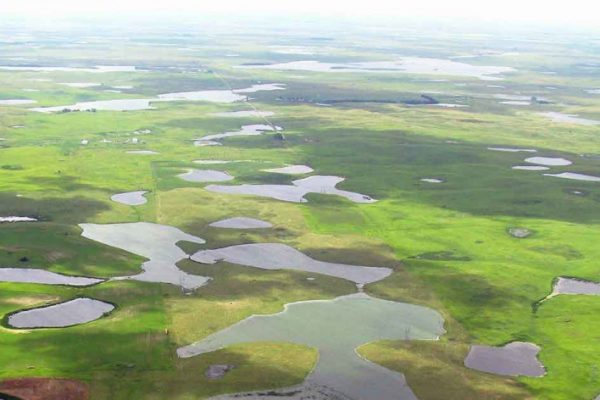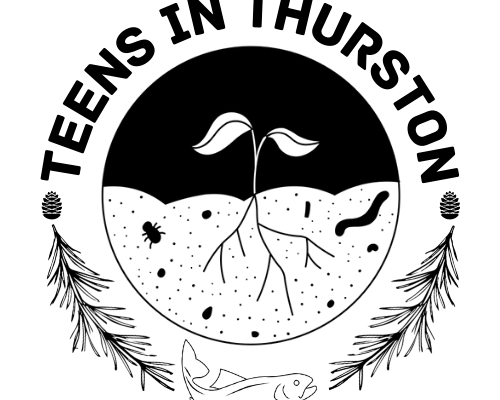If we had interrogated our obsession with the settler-colonial agrarian myth, and therefore our deep cultural, social, and political commitment to small family farms, fifty, one hundred, or four hundred years ago, we might have saved ourselves from a public health crisis driven by overabundant sugars derived from overproduced commodity grain, a fresh and saltwater pollution crisis across much of the United States, an aging and emptying countryside, and an ethnically and gender-homogenous class of farmers who own so much farmland it’s nearly impossible to start farming without being a millionaire.
Sarah K. Mock, “Farm (and Other F Words)”, pg. 209
Besides my internship at TCD, I’ve been working part-time for the City of Olympia’s Climate Program with Dr. Pamela Braff. My project is to create an existing building stock inventory, with the vintage and type of all residential and commercial buildings in the city. I also am incorporating socioeconomic information in my final report using census data over census block groups, to offer a more complete picture of housing and social vulnerabilities in the city. The hope is that this preliminary research can effectively inform future energy/cost analysis and electrification policy (specifically for retrofitting existing buildings with electric heat pumps) as the City works towards meeting Thurston Climate Mitigation Plan goals by reducing greenhouse gas emissions. I won’t go too much more into this but it has me thinking overall about the food-water-energy nexus, my work with TCD, my studies at Evergreen generally, and the future of farming and environment in Thurston County (and beyond). This introspection also is intensified by my impending graduation and thoughts of “what do I do next?”.

This week, President Joe Biden visited an ethanol plant in Menlo, Iowa to announce lifting restrictions on E15 gasoline sales- directing the EPA to use an emergency waiver to bypass the usual summertime ban of their use. While the issue of biofuels is complex and controversial, production of bioethanol has driven massive swathes of rangeland into corn production, and hasn’t done much to increase US energy independence or reduce GHG emissions. (A great article discussing the current state of bioethanol can be found here). My in-laws live in northeast Iowa, and in a few years I plan to move to the area with my significant other. Everyone in Iowa has strong opinions and interest in farming, as the industry undoubtedly holds a majority of political and social power. With this in mind, reading Sarah K. Mock’s tremendous book Farm (and Other F Words): The Rise and Fall of the Small Family Farm this week was a timely choice.
I’m hesitant to summarize the book too thoroughly, as it needs to be read to fully appreciate the strength of Mock’s research, interviews, case studies, and analysis. I read it all in one sitting as I couldn’t put it down once I started. It begins with the idea of a Good Farm, the “idyllic, agrarian setting of our dreams” (pg. 25) which eventually she defines as having three essential functions: 1) produce healthy, affordable food or fiber, 2) create livable, stable jobs, and 3) not contribute to the degradation of soil, water, or other public resources (pg. 182). Before launching into the details of her failure to find such a Good Small Family Farm, Mock states an important thesis of her book: farming is an economic act, not a primarily moral one. It isn’t a lifestyle, it’s a job. She calls our failure to hold farms to similar standards of high-quality, affordable goods that don’t harm the community in their creation as we do with any other businesses, including other essential businesses like restaurants and grocers, “agricultural exceptionalism”.
One of the greatest conundrums in farming is that most farmers are “land rich and cash poor”. Land ownership is a safety net, an investment, and a way to build generational wealth, and farmland ownership is also a high-value tax haven. Commodity farming and zero-sales farms are both quite common in America. This leads to the crisis in lack of access for beginning farmers: “If farmland is a high-value investment vehicle, a lucrative tax shelter, and a desirable hobby, what chance do young agrarians have when they plan to use the land primarily for its least lucrative purpose–actually growing crops?” (pg. 64-65).
The next few chapters outline the various avenues of subsidized risk management, conservation payments, commodity markets, massive investments and market/skill building needed to switch away from commodity farming (Chapter 3), balancing tradeoffs between farmland-holding real estate business and farm production business, the pragmatism and land/wealth accumulation that defines multigenerational farms (Chapter 4), and the Yeoman Myth (Calo 2020) where young beginning farmers can save the broken system through strong work ethic (Chapter 5). Mock concludes this section of the book with the realization that her thesis of “finding a Good Farm” and the whole idea of what the Good Farm is was flawed. She realizes that the common thread between all farms she’d visited had not only been wealth and the desire to keep it, but that the root of all American farm wealth is underpaid and unpaid labor.
Chapter 6 is a blazing, infuriating indictment of the exploitation of American agricultural laborers, from the horrors of chattel slavery, followed by sharecropping, and the modern-day exploitation of migrant and undocumented workers, prison laborers, children (both related and un-related), volunteers, and apprentices. Even though in the past I’ve joined marches through Skagit County and pickets at Bellingham Whole Foods in solidarity with Familias Unidas por la Justicia, this chapter was still eye-opening to the depths of horrific injustice in agricultural labor.
Chapter 7 expounds on the conclusions that as Americans, we must “examine not only our nation’s history of dispossession and racism against Indigenous people… and the indelible links between slavery and agriculture” (pg. 153). Highlighting the similarities between commonly-held lands in pre-Columbian North America and those in Europe prior to The Enclosure Acts, Mock deftly weaves together these continental histories into the unavoidable argument that Euro-Americans violently dispossessed Indigenous people of their lands even in full awareness that they were violating their own European laws (pg. 175). I want very much to dive deeper into the idea, history, and practice of collectively-owned agriculture, revival of the commons, and history of Indigenous foodways and agricultural practices as I move through this quarter, so I’ll hold off on details here and finish discussing Mock’s conclusions next week.
Tuesday 4/12
Envirothon is one week from today, so I designed some signs to designate test stations, sign-in, and parking, then printed and laminated them. I finished printing out all the exams, keys, and other packet materials for teams, judges, and volunteers. I also went out to run errands — buying snacks, drinks, index cards, pens, and tote bags for teams, advisors, staff, and volunteers. It was fairly uneventful other than getting caught in random bouts of hailstorm as I dashed between stores! Busy work isn’t so bad and it feels good to get the “little things” done early to take some pressure off.
Wednesday 4/13
I didn’t go to TCD today, but took part in the “Tending Seeds Tends People” Evergreen Equity Symposium workshop. I went in early to bring a rescue latte to Sarah Dyer and help her set up for the event under the high tunnel. Immediately it felt good to be back at the farm and community garden space, and meet some new folks as well. For the presentation, I read Susan’s lovely writing about Dr. Robin Wall Kimmerer’s work and Indigenous seed sovereignty, and read my own piece about cooking for Food Not Bombs and seeding the student community garden plot last year.

In summer 2020, during wildfires and protest, pandemic and isolation, I worked in the bakery department of a large grocery store. I quickly found out that the average person has no idea where their food came from, alongside a collective emerging panic that whatever convoluted global supply chain brought them their favorite brands wasn’t infinite, infallible, or guaranteed. Another, much more joyful part of that summer was cooking each week with Food Not Bombs, scheming up delicious vegetarian meals with rescued food staples and local produce from leftover CSA shares.
I’d hardly seen such beautiful vegetables as the ones donated to us by GRuB each week. Each leaf, root, and fruit was a riot of color and completely unique from its neighbor. Red, yellow, and purple potatoes; orange and purple carrots; red, orange, and yellow tomatoes; zucchinis; cucumbers; beets; leeks; garlic; onions; turnips; more varieties of sweet and hot peppers than I knew existed; every shade of green possible in lettuces, cabbages, chard, collards, and herbs. I learned what a lemon cucumber was, cooked greens that I’d never have considered using before, and discovered that adding beets to a salad is like vegetable candy.
My co-cook and I were always nervous and excited to present the feast to the social workers and guests at the family shelter community meal each week. We were the worst critics of our own cooking, because we didn’t want to just feed people. We wanted to give them a dinner they’d love, savor, remember, and be nourished by.
One night, a man who we hadn’t met before walked up to the tables and asked what we were serving. He looked a little crestfallen when we showed him our handwritten menu. “I don’t like vegetables much,” he told us. “But thank you for cooking, I’m real hungry and I’ll try the food.” He took a container and sat down in a folding chair nearby to have his dinner. A few minutes later, the man walked back over us to with a look of amazement.
“Where did you get those vegetables from? I’ve never eaten anything like that before.” When we told him they were grown right here in Olympia, he could hardly believe it was true. “You changed my mind about eating vegetables. That might be the best damn meal I ever tasted.” He asked for seconds, and took thirds for later.
Another night, we saw a toddler sitting alone on the parking lot curb with a takeout container of salad, as his mother stood nearby talking with a friend. He picked up a single piece of cabbage, very seriously considered it, and took a skeptical nibble. He nodded to himself silently, then quickly devoured the entire salad by the fistful, his tiny bare hands dripping with homemade balsamic dressing.
I didn’t fully understand the secret behind these vegetables, their ability to impress, nourish, and connect, but I began to believe in it all the same.
Nearly a year later, in spring 2021, I found myself learning how to grow those same kinds of mystically delicious vegetables in the Evergreen community garden as part of the Terroir/Meroir program. Several mornings a week we gathered to till and amend the soil, plant seeds, brew and apply fermented plant juice as fertilizer, tend the emerging seedlings, and weed the beds. On a sunny day we tasted our first harvest – tiny crunchy peppery radishes still warm from the earth.
Just as wonderful and surprising was the way my heart and body mended from grief, illness, and loneliness each day that I began by plunging my hands into the rich soil. We were cultivating a space for humans, plants, microbes, birds, snakes, and earthworms alike.
Too many of us are disconnected entirely from the production and preparation of our food. I was a free lunch kid in public school and depended on food banks, food stamps, and dumpster diving for most of my life. I didn’t think much of food except where and when the next meal would be. Too often we’ve been forced to settle for whatever keeps us alive, forgoing agency and connection in the pursuit of fulfilling basic needs.
My experiences with Food Not Bombs and the Evergreen community garden offered a glimpse into a world where the sensory and community qualities of food are just as important as its simple existence. Together, with dignity, joy, and solidarity, we can do more than just survive.
Dr. Vandana Shiva, the ecofeminist food sovereignty activist, said it best- “The time has come to reclaim the stolen harvest and celebrate the growing and giving of good food as the highest gift and the most revolutionary act.”
My essay

Thursday 4/14

It was a slow day in the office. I packed up supplies and educational materials for our Saturday workshop, but mostly Nora, Kiana, and I ended up talking about the past, present, and future of TCD. I mentioned to Nora that Beth was delighted to hear we were working together, which made her happy to know. I also suggested we should try to connect with Maleah about high school outreach — hopefully we can make something happen this quarter! It sounds like my talk at the workshop yesterday actually aligns pretty well with Nora’s master’s thesis from 2021 at UW Tacoma: “Quarantine Kitchen: Examining the Role of Food and Food Experiences in Meaning-Making During Covid-19”. I plan to read it next week, as well as her other published article “Farming in the time of pandemic”. We also talked about the incredible organizational change that TCD has made in the last few years, and the positive directions it’s going after a difficult, dire chapter of abuse of power. Nora also gave me a dozen eggs from her chickens–a very sweet punctuation to the emerging theme of the last few days.
Saturday 4/16


I did my first weekend outreach event — a Healthy Yards Workshop at Jubilee, a 55+ active adult community in Lacey. Because it was cold and overcast, Nora, Kiana, and I worried that not many folks would come outside, even under a cover, to talk with us. Fortunately, we couldn’t have been more wrong! I kept count, and a total of 61 people came up to our tables to ask questions and take educational materials! The native plants and noxious weeds display were especially a big draw, and it was quite nice to see what an engaged community there is at Jubilee. One man did attempt to bait us multiple times with comments about how climate change wasn’t real and he didn’t believe in “pesticide-free”, plus threw in that he loves GMO crops as a former corn and soybean farmer, but even he signed up for the TCD weekly newsletter and asked genuine questions about native plants in gardening. Sue, the woman who invited us to Jubilee, is part of an active “Good Earth” club in the community and repeatedly offered us coffee, tea, hot cocoa, brownies, and mini muffins. Overall it was a really fun time and offered lots of insight into elders living in community, sharing space and interests, navigating conflict and difference of opinion, but all definitely caring a great deal about where they live and how it should be at its best.
Bibliography
Calo, A. (2020). The Yeoman Myth: A Troubling Foundation of the Beginning Farmer Movement. Gastronomica, 20(2), 12–29. https://doi.org/10.1525/gfc.2020.20.2.12
Mock, S. K. (2021). Farm (and Other F Words): The Rise and Fall of the Small Family Farm. New Degree Press.
Reports, S. D. A. W. M. R. (2022, April 13). Biden unveiled his ethanol plan in Iowa. Here’s what we learned during president’s visit to Menlo. Des Moines Register. https://eu.desmoinesregister.com/story/news/politics/2022/04/11/president-joe-biden-menlo-iowa-visit-talk-rural-issues-ethanol-poet/7277815001/
Reynolds, M. (2022, April 13). Biofuels Are Getting a Second Look—and Some Tough Questions. Wired. https://www.wired.com/story/biofuels-gasoline-russia/
White, N. (2021a). Farming in the time of pandemic: Small farms demonstrate flexibility, innovation, and hope. Journal of Agriculture, Food Systems, and Community Development, 1–3. https://doi.org/10.5304/jafscd.2021.102.008
White, N. (2021b). Quarantine Kitchen: Examining the Role of Food and Food Experiences in Meaning-Making During Covid-19 (Thesis). University of Washington. http://hdl.handle.net/1773/47241






